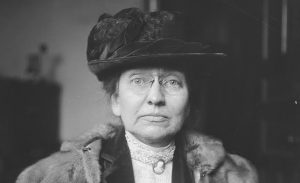4 The Dawn of Social Welfare in America
Joe Nelson
Section 4.1: 19th Century Industrialization and Early Social Support Systems
The swift growth of industrialization during the 19th century had an impact on American society. As individuals migrated from rural areas to expanding cities in search of work in factories, the urban landscape expanded rapidly, sometimes surpassing the development of housing and hygiene standards. This boom resulted in public health issues, including crowded living spaces, inadequate sanitation and elevated disease rates. To tackle these issues early support systems emerged within communities mainly driven by groups and religious organizations. These organizations offered services such as food, shelter and basic healthcare. Notably the Society for the Prevention of Pauperism was established in 1817 as one of the pioneers focusing on aiding children by setting up schools and advocating for child labor regulations (Katz, 1996). During this era mutual aid societies also gained prominence. Immigrant communities formed these societies to provide insurance against sickness, joblessness or death—a form of community centered self help approach. The growing labor movement played a role too; unions began advocating for workers rights, improved pay rates and safer working environments—laying the foundation for labor legislations (Dubofsky, 1994).
Section 4.2: The Settlement Movement and the Foundation of Social Work
The Settlement Movement was integral in addressing urban poverty and squalor directly through community engagement and empowerment. Pioneers like Jane Addams and Ellen Gates Starr did not just offer services but lived in the communities at Hull House, fostering a deeper understanding and stronger relationships with those they served. These settlement houses provided English language classes, early childhood education, and legal aid, and they promoted cultural activities that enriched the community. The movement also had a significant impact on women’s roles in public life, providing opportunities for middle and upper-class women to engage in social service. This involvement not only pushed forward the professionalization of social work but also propelled the women’s suffrage movement, as many women active in settlements became leading figures in the fight for women’s rights (Deegan, 1988). The success of these grassroots efforts demonstrated the effectiveness of proactive social service and highlighted the importance of social welfare policies that go beyond mere relief, aiming instead at social integration and empowerment.

Section 4.3: The Impact of the Poor Law Amendment Act and Factory Acts
The Poor Law Amendment Act of 1834, with its harsh workhouses designed to deter people from seeking help, cast a long shadow over American social policy. It prompted a wary approach to institutional aid in the U.S., encouraging alternatives that provided support without sacrificing dignity. Meanwhile, the push for better working conditions gained momentum with the Factory Acts. These laws initially focused on reducing working hours for children and gradually expanded to improve conditions for all factory workers. Massachusetts led the way in 1836 with laws limiting child labor, setting a precedent that spurred other states into action. These early efforts laid the groundwork for the comprehensive labor protections we have today, like the federal Fair Labor Standards Act of 1938, which established minimum wages, overtime pay, and strict child labor laws. These chapters of history show us how, in response to the harsh realities of industrialization, compassionate and determined individuals and groups laid the groundwork for the social safety nets we now often take for granted. They remind us that progress sometimes starts with simple acts of service and advocacy, growing over time into movements that change the fabric of society.
References
Katz, M. B. (1996). In the Shadow of the Poorhouse: A Social History of Welfare in America. New York: Basic Books.
Dubofsky, M. (1994). The State and Labor in Modern America. University of North Carolina Press.
Deegan, M. J. (1988). Jane Addams and the Men of the Chicago School, 1892–1918. New Brunswick, NJ: Transaction Publishers.
Goldin, C., & Katz, L. F. (2011). The Race between Education and Technology. Cambridge, MA: Belknap Press of Harvard University Press.
